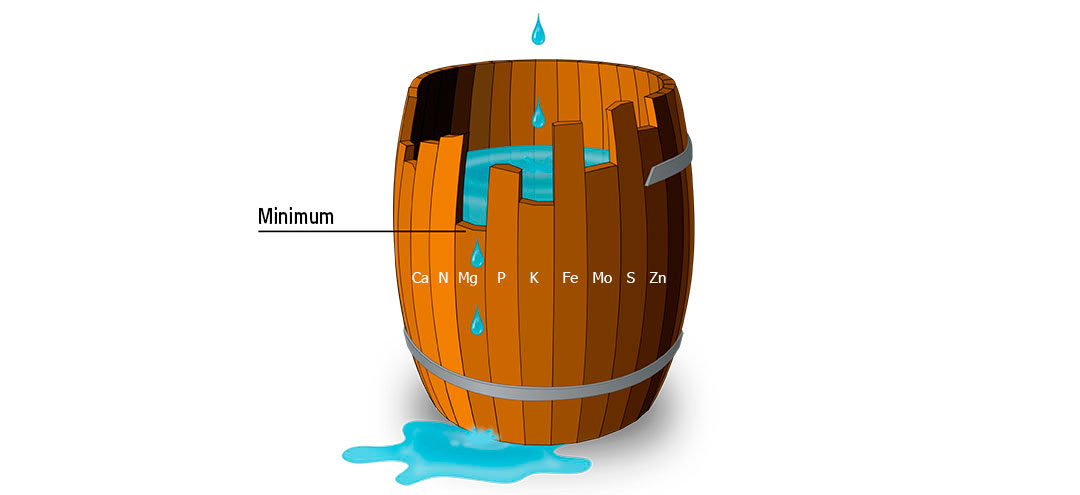The Law of the Minimum, also known as Liebig’s Law after the German chemist Justus von Liebig, states that “The growth of a plant is not determined by the total amount of available resources, but by the most limited resource, which acts as the limiting factor.”
Based on this principle, we understand that for a plant to develop properly, all contributing factors must not only be vital but also meet minimum required levels. If any factor falls below its adequate level, it will limit the optimal health and growth of the plant.
Liebig’s Law applies universally to all essential factors, including light, air and soil moisture, nutrients, and more. Thus, even the smallest component necessary for life becomes critical.

Barrel of Liebig’s Law.
To illustrate his theory, Liebig used the now-famous “Barrel of Liebig’s Law.” This illustration depicts a barrel with staves (the wooden planks forming its sides) of varying heights. Each stave represents a nutrient, and its height shows the abundance of that nutrient.
This illustration demonstrates that the stave (or nutrient) that falls below the plant’s necessary level is what limits its proper growth.
Focusing on essential mineral elements, these are vital for plant growth. Those required in large amounts (macroelements) are crucial, as are those needed in moderate (secondary elements) or even trace amounts (micronutrients).
However, plants only absorb certain chemical forms of these nutrients from the soil solution. Therefore, an element may be present in the soil in high amounts, but if it is not in a form accessible to the plant, it effectively becomes unavailable.
To address these issues, JISA Plant Nutrition offers a range of deficiency corrective products. These products provide essential nutrients in forms available to the plant, complementing traditional mineral fertilization and supporting optimal plant nutrition.
